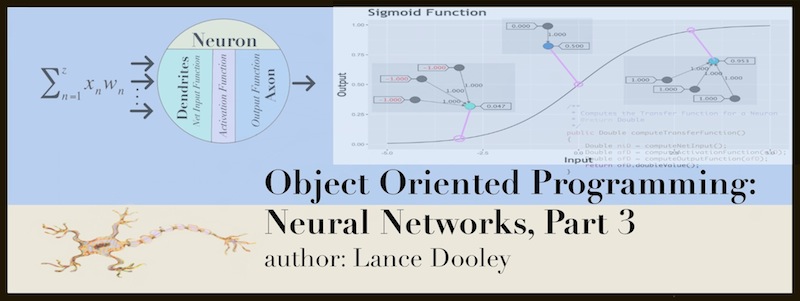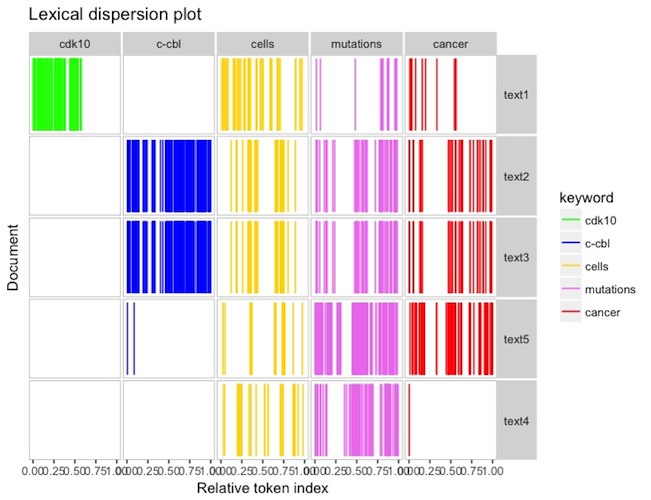This article is a primer on a term that is being used to describe the evolution of industry in general, The Fourth Industrial Revolution.

Synopsis: The Fourth Industrial Revolution, by Lance Dooley 2017
This article is a primer on a term that is being used to describe the evolution of industry in general, The Fourth Industrial Revolution.

Robots, Androids, and the SINGULARITY, by Lance Dooley 2017
A short overview about Robots, Androids, and the Technological Singularity.

Object Oriented Programming: Neural Networks, Part 1, by Lance Dooley 2017
In this article, we focus our attention on how Object Oriented Programming techniques can represent a biological system such as a Neural Network.

Object Oriented Programming: Neural Networks, Part 2, by Lance Dooley 2017
We continue refining our digital model of a neuron, define the Net Input Function, and begin discussing how a neuron processes information.

Object Oriented Programming: Neural Networks, Part 3, by Lance Dooley 2017
Complete modeling the logical Neuron unit and look at a few simple test cases using the Sigmoid Function for the Activation Function


Volcanic Ash Plume arising from Mount Cleveland on May 23, 2006
Seen from the International Space Station.
Credit for original Image Used:
Original Image Credit: https://en.wikipedia.org/wiki/Mount_Cleveland_(Alaska)#/media/File:MtCleveland_ISS013-E-24184.jpg
"NASA material is not protected by copyright unless noted".

This application accompanies the series of LinkedIn articles on
"Object Oriented Programming, Neural Networks" .
Written entirely in Java 8, runnable with a
JVM.
A brief Object Oriented Class architecture explanation and java class definitions can be found on the github link for this project.
(L)Lexical Dispersion Plot, (R)Word Cloud


Using R Studio and the quanteda package, it is possible to interrogate word data and create some illuminating plots.

R is a open source vectorized programming language optimized for Statistical Computing and graphing.
The above plot shows the highest frequency terms in a corpus of 3321 texts. Corpus was tokenized and cleaned with the Quanteda package.
ggplot(topDf) + geom_point(aes(x=term, y=frequency)) + ggtitle(title) + coord_flip();

Convolve2D convolve2D = new Convolve2D();
convolve2D.setBufferedImage(bi);
KernelFactory2D kf2D = KernelFactory2D.getInstance();
int[][] kernel = kf2D.getKernelSharpingIntensified(5, 25);
try {
convolve2D.setKernel(kernel1);
BufferedImage img1 = convolve2D.convolve();
} catch( Exception ex ) { }
Go to the Github page for Digital Signal Processing to download raw code files and carry out convolutions on images, using the following types of kernels; unweighted smoothing, smoothed gaussian blur, sharpening, and intensified sharpening.

Keywords: Factory Pattern, Interface, Enum, Customized Exception classes, Immutable, Singleton